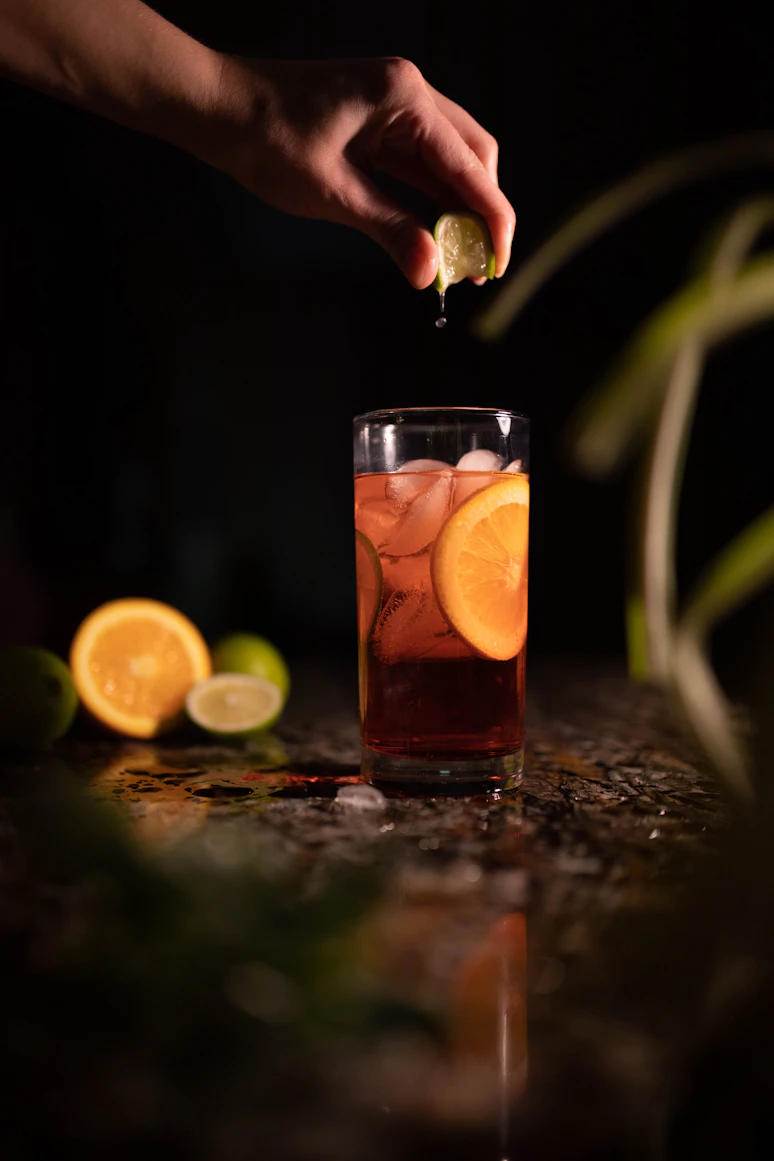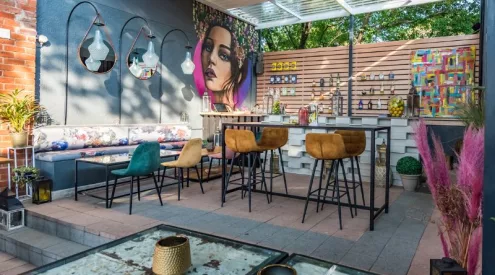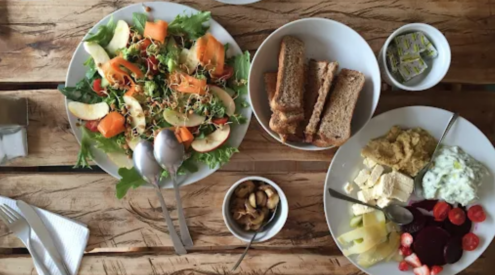I’m a bit bored with honey-and-mustard glazes, so this year I thought I’d try burnishing a Christmas gammon with a sticky Asian-style glaze flavoured with ginger, soy sauce and fresh orange juice. The combination of smoky gammon and sweet, spicy citrus was delicious, and I’m going to use the same glaze for the ham I’m planning for Christmas Eve. What a pity that the gammon itself was neither succulent nor tender. Although the flavour was good, it was thoroughly overcooked, and I’m still fuming about this.

Christmas gammon with a sticky orange and ginger glaze.
I don’t usually moan on this blog about products that disappoint me (do you find whining blog posts as boring as I do?) but I’m annoyed enough to make an exception here. I decided to bake rather than boil my gammon this year, because the giant bone-in gammon I bought last year collapsed into sodden shreds in the pot.
Baking the gammon in liquid would, I figured, prevent any chance of collapse, and I was also interested to see if baking would produce a texture superior to that of a boiled gammon. I bought a boneless gammon, and carefully read the cooking guidelines on the packaging, which gave instructions for both boiling and baking. I thought it odd that the cooking time for both methods was identical (namely, 30 minutes per 500 g, plus 25 minutes extra), given that the recommended temperature for baking the meat was 160ºC. How could a gammon baked at this temperature require the same cooking time as one simmered on the stovetop at 100ºC, the boiling point of water? Still, I decided to cast my doubts aside and follow the instructions to the letter. After all, I’m always telling people to follow the damned recipe.)
The gammon after three hours in the oven: rather shrunken.
My gammon weighed 3.4 kg, so the cooking time added up to just under four hours (an hour per kilogram, plus an extra 25 minutes). I baked the gammon in a deep roasting pan, half submerged in a mixture of stock and beer. The instructions advised covering it tightly with foil, which I did, and I added an inner layer of wet baking paper secured with string, because I was worried about the meat drying out. After it had been in the oven for three hours, I did a finger-poke test. The meat felt hard, and I could see through the foil that it had shrunk to about two thirds of its original size. At this point I whipped it out of the oven, but it was too late. The meat was flavoursome enough, I suppose, but had lost all its juiciness, and was a long way off tender. I served it to my guests (it was too late to make anything else) but I wasn’t happy about it, and I gave myself a good kick in the pants for not trusting my instincts and cooking it at a much lower temperature.
I am going to try the baking method again with the next gammon, but this time will set the oven to 100ºC. I’ll let you know how it turns out.
In this recipe, because I don’t want your gammon ruined too, I’ve given you instructions for simmering the meat on the stovetop in a beery broth (this is the same liquid and method I use for cooking my Christmas Gammon Glazed with Brandy and Coke).
Are you looking for more South African Christmas recipe ideas? Check out Getaway’s guide to Christmas recipes.
Christmas Gammon with a Sticky Orange and Ginger Glaze
Serves 8-10 as part of a festive feast
For the gammon:
- a large gammon, weighing 2.5 to 3 kg, bone in or out
- one can (330 ml) ginger ale
- one bottle (330 ml) of your favourite beer
- 2 whole star anise
- 3 bay leaves
- 3 whole cloves
- 1 large onion, peeled and quartered
- 2 carrots, scraped and roughly chopped
- a small stick of celery
- a few parsley stalks
- 1 tsp (5 ml) whole black peppercorns
- water, to cover
- whole cloves, to stud
For the glaze:
- finely grated zest of a large orange
- juice of two oranges
- 3 T (45 ml) Kikkoman soy sauce
- 3 T (45 ml) rice vinegar
- 3 T (45 ml) soft dark sugar
- 2 T (30 ml) honey
- 2 T (30 ml) grated fresh ginger
- 1 clove garlic, peeled and finely chopped
- the juice of half a lemon
Make a note of the weight of the gammon before you discard the packaging. Put the gammon, ginger ale, beer, star anise, bay leaves, cloves, onion, carrots, celery, parsley stalks and peppercorns into a deep pot. Add enough water just to cover the gammon to a depth of 1 cm. Bring to the boil, then turn down the heat so that the gammon cooks at a simmer. Partially cover the pot with a tilted lid. If you’re using a boneless gammon, cook the meat for 30 minutes per kilogram. If you’re using a gammon with a large bone, cook it for 45-55 minutes per kilogram, or according to the instructions on the wrapping. Check the pot now and then, and top up with more water if necessary. Turn off the heat and leave the gammon in the liquid to cool completely.
Put all the ingredients for the glaze, except the lemon juice, into a small saucepan and bring to the boil. Bubble the the glaze for about 10 minutes, or until it has reduced by about half, is slightly syrupy and is forming big, slow-popping bubbles. Remove it from the heat and stir in the lemon juice.
Lift the gammon out of the cooking broth, pat it dry on kitchen paper and place in a roasting pan. (Strain the stock and freeze it for future use in stews and soups). Peel away the rind and discard it. If there is a very thick layer of fat below the rind, scrape most of it away, leaving behind a thin layer. Using a sharp knife, score the top of the gammon in a diamond pattern. Stud the gammon with whole cloves.
Pour the glaze over the gammon and place the pan under the hot grill, on the middle shelf of the oven. Every two minutes or so, baste the meat by scooping the glaze off the bottom of the pan and trickling it all over the top and sides. Leave the oven door slightly open and watch it like a hawk: the glaze burns easily. When the gammon has a rich, sticky crust, and there is just a little glaze left in the bottom of the pan, remove it from the oven. Let the pan cool for 10 minutes then, using a pastry brush, paint any remaining glaze over the top and sides of the gammon (or dribble it on with a teaspoon). Serve hot or cold, with a green salad and potatoes.
This recipe was originally published on Scrumptious SA.

My new cookbook, Scrumptious: Food for Family and Friends (Struik Lifestyle) is available at all leading bookstores in South Africa.
















